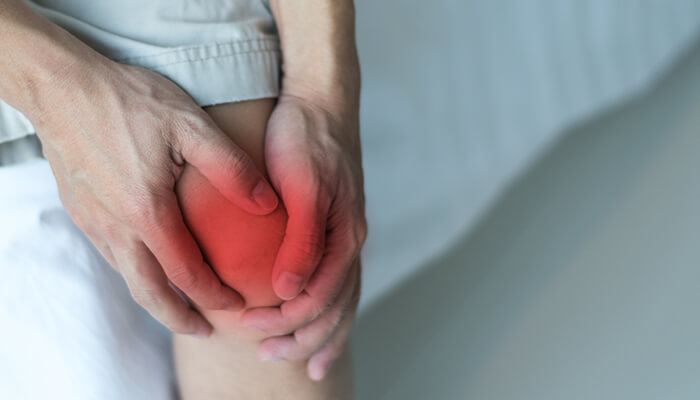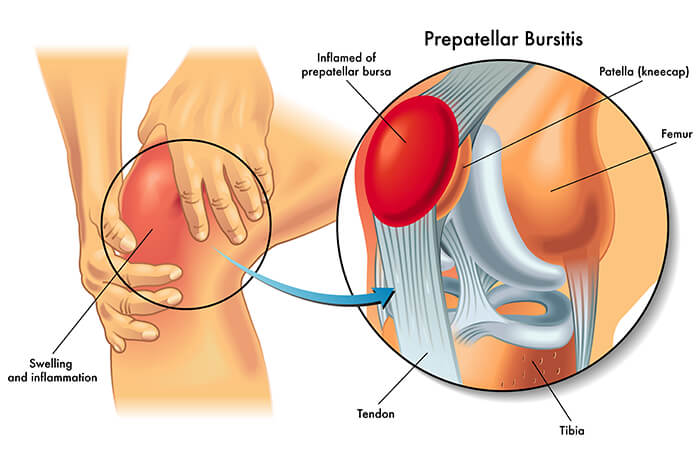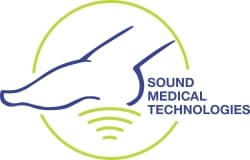Extracorporeal Shockwave Therapy (ESWT) for Patellar Tendonitis
ESWT Patellar Tendonitis
Overview
Extracorporeal Shockwave Therapy (ESWT), also known simply as Shockwave Therapy or Shockwave, was initially developed to treat kidney stones: extremely high-energy ultrasound was emitted by a specialized generator and used to break up these calcium deposits. Soon, however, physicians realized that Shockwave could be used to treat many chronic injuries of the musculoskeletal system—stubborn conditions of the joints, ligaments, and tendons regarded as resistant to treatment.
To date, ESWT has been used to treat various forms or tendinitis, bursitis, and avascular necrosis (AVN) in sites ranging from the mandible of the jaw to the talus of the ankle—literally head to foot. These conditions are all largely over-use injuries to soft tissue structures, and they have several things in common: chronic inflammation, incomplete healing, and sometimes an inadequate blood supply.


Here’s where Shockwave comes in. By using the ultra high-energy ultrasound mentioned above, a carefully controlled amount of stress could be delivered to the injured areas. This restarts the body’s natural repair response. Think of it as a jump-start to the healing process which can then lead to complete healing.
A 2008 research study from the University of Groningen (Netherlands) looked at the data from seven controlled trials of Shockwave Therapy for use in treating patellar tendonitis. Their findings were overwhelmingly positive: the team concluded that about 75% of patellar tendonitis cases saw significant improvement with ESWT treatment. This figure becomes even more impressive when considering that Shockwave Therapy is non-invasive and has few (if any) side effects.
Patellar Tendonitis FAQs:
What is patellar tendonitis?
Tendonitis is the medical term used to describe chronic inflammation of a tendon, and tendons are the tough, fibrous bands which connect muscles to bones. In this case, the large oval tendon which connects the kneecap (patella) to the shin bone (tibia) becomes inflamed over time with continuous use. This tendon is vital to overall lower extremity function as it allows extension of the leg which is an essential part of running, jumping, kicking a soccer ball, or even walking. Many of our patients with patellar tendonitis ESWT in New York are runners or other atheletes. Not surprisingly, this condition is commonly known as jumper’s knee, as jumping sports like basketball put great stress on the patellar tendon.
What causes patellar tendonitis?
Repetitive stress on the knee, most frequently from overuse in sports or exercise, causes patellar tendinitis.
Tiny tears in the tendon are caused by the knee’s recurrent stress, which over time causes inflammation and weakens the tendon.
However, the problem doesn’t develop at once, it takes time.
Once there are enough tears in your tendon you will start experiencing pain.
What are the symptoms?
These symptoms are found in almost all cases of patellar tendonitis. It is extremely common and usually mild, but several of our Cranberry ESWT patellar tendonitis patients experienced enough pain over a long enough period to require a higher level of treatment than NSAIDs, physical therapy, and stretching.
- Pain directly below the kneecap
- Almost always worse with weight bearing activities such as walking, running, and jumping.
- Is especially painful when getting up from a kneeling or sitting position (moving the knee from fully bent to standing).
Who gets this condition?
Practically anyone, but patellar tendonitis is much more common in athletes and those with physically demanding jobs. A sizeable fraction of our Pittsburgh patellar tendonitis ESWT patients are runners.
How is patellar tendonitis usually treated?
Regardless of how severe the pain resulting from this form of tendonitis may get, surgery is almost never an option. This is due to the fact that the tendon’ structure usually isn’t altered in a manner that’s surgically correctible—surgically speaking, there’s nothing to fix. First line treatment includes over-the-counter medications like ibuprofen, naproxen, and Tylenol (NSAIDs) and physical therapy. This doesn’t always work, and when symptoms recur the next step is usually cortisone injections. Our Bridgewater patellar tendonitis ESWT patients have commonly had two or more cortisone injections without lasting relief.
Can patellar tendonitis recur?
Yes, patellar tendonitis can recur after initial treatment and resolution of symptoms. Recurrence of patellar tendonitis can be influenced by various factors, including the underlying causes, individual biomechanics, and adherence to rehabilitation protocols.
Failure to fully address the contributing factors that initially led to the development of patellar tendonitis can increase the likelihood of recurrence. This may include inadequate rehabilitation, premature return to activity, or unresolved issues such as muscle imbalances, improper training techniques, or biomechanical abnormalities.
Additionally, certain activities or behaviors that place excessive stress on the patellar tendon can increase the risk of recurrence. These may include repetitive high-impact activities, insufficient warm-up or cool-down routines, sudden increases in training intensity or volume, or improper equipment or footwear.
To reduce the risk of recurrence, it is important to follow a comprehensive rehabilitation program, address any underlying biomechanical or training issues, and gradually return to activities with appropriate modifications. Maintaining proper conditioning, implementing cross-training, and incorporating strength and flexibility exercises targeted at the lower extremities can also help prevent recurrence.
If patellar tendonitis does recur, it is advisable to seek medical attention to identify the factors contributing to the recurrence and to develop an appropriate treatment plan. Working closely with healthcare professionals, such as physical therapists or sports medicine specialists, can help manage the condition effectively and minimize the risk of further recurrence.
Is rest necessary for treating patellar tendonitis?
Rest is an essential component of treating patellar tendonitis. Rest allows the inflamed tendon to heal and reduces stress on the affected area. It is important to avoid activities that worsen symptoms and aggravate the tendon. However, complete immobilization is generally not recommended as it may lead to stiffness and muscle weakness.
Instead, a balance between rest and appropriate rehabilitation exercises is necessary. Gradually introducing gentle movement and exercises prescribed by a healthcare professional, such as stretching, strengthening, and gradual loading of the tendon, can promote healing and prevent further complications.
How can ESWT be used to treat this condition without surgery?
Extracorporeal Shockwave Therapy (ESWT) is an excellent treatment for most forms of tendonitis, including patellar tendonitis—it’s unique, in fact. Remember that tendonitis is a chronic inflammation based condition characterized by incomplete healing and inadequate circulation. To date, Shockwave Therapy is the only treatment recognized to cause an effect called neo-vascularization (the formation of many new capillary arteries in the area). ESWT effectively uses high-intensity ultrasound energy to “jump-start” the healing process.
Sound Medical Technologies, Inc. owns and operates some of the rare mobile Extracorporeal Shockwave Therapy (“ESWT” ) machines in Pennsylvania and Eastern Ohio. We understand the importance of sensible and effective practice management. Our company is devoted to making ESWT convenient and easy to perform within your office or facility setting. We operate FDA approved Dornier Epos Ultra’s which are ultrasound guided allowing you to see the inflammation within the body and treat it precisely.
Sound Medical Technologies, Inc. offers several ESWT– related services. We provide trained staff and certified technicians to operate the equipment during ESWT procedures. Physician certifications, recommendations and our clinical applications specialist can answer all your questions.
Call Sound Medical Technologies to learn how you can have this technology available on a case-by-case basis, without purchase or lease. We deliver and set up the machine and provide you with educational materials for patients. Assist you in providing the procedure. You maintain control of the patient relationship. You receive the reimbursement into your practice.
Home Remedies For Patellar Tendonitis
There are some lifestyle changes that can help you deal with patellar tendonitis, so if you are suffering from patellar tendonitis then you should try these natural remedies:
- Avoid Any Activity That Causes Discomfort Or Injury
Unfortunately, if you are suffering from this problem repetitively then you may need to stop the sport that’s causing you pain and injury.
You should temporarily stop playing that sport, at least not until you aren’t healed properly.
A small break will give you chance to heal, then you can start playing again.
- Over-the-counter Pain Relievers
OTC pain delivers are really effective to avoid discomfort after any kind of injury, you can use them to to get rid of the pain.
However, make sure to not depend on them, they may show some side effects.
If you still can’t desk with the pain the try to talk with your doctor.
- Apply Ice
Ice is a great home remedy to deal with discomfort after any injury. Simply use an ice bag and apply it to your injury. For better results apply ice twice a day.
Is Surgery Necessary For Patellar Tendonitis?
Yes, those who are suffering from patellar tendonitis must get surgery especially if the other treatments such as physical therapy, rest, anti-inflammatory medications or injections have shown no improvement over the treatment of several months. In severe cases, surgery is necessary because of conditions like damaged tendon or partial tear in it to remove damaged tissues and stimulate healing, so that your tendon can finally start healing without any interruption. Recovery from surgery will take few months, combining it with physical therapy will give better and faster results!
Can Patellar Tendonitis Cause Ruptured Tendon If It Is Left Untreated?
Yes, an untreated patellar tendonitis can easily lead to ruptured tendon, since it’s already so weak. And if repeated stressed without enough rest and recovery is done to it, there are extremely high chances of a painful rupture. As the time passes, chronic inflammation will keep making it weaker and weaker, which increased the risk of rupture, so before it gets any worse seek medical treatment, as it needs a serious medical treatment.
Can Patellar Tendonitis Become Chronic?
Yes, patellar tendonitis is one of those conditions that can easily become chronic especially if it hasn’t healed properly or repetitive stress is applied on it. When at a chronic stage, patellar tendonitis will be known as “Jumper’s knee”, which results from continuous inflammation and microtears in tendons. This will lead to long-term pain, stiffness, and reduced function of tendon which can lead to mobility issues as well. Furthermore, if it’s left untreated, tendon will become more prone to serious injuries like tendon rupture, or even infection. Which is why serious conditions like Patellar tendonitis must be addressed as early as possible, even if you get treated after ignoring it for a long time, you might face problems because of it later in life.
How To Prevent Patellar tendonitis
After you have recovered from this problem you probably don’t want to suffer from it again, then why not try some preventive tips?
Here are some of the most effective preventive tips to avoid patellar tendonitis in future:
- Properly warm up or stretch before any kind of sport or activity. Many people don’t stretch properly then complain when they develop wounds, therefore, do not forget to warm up.
- Wear right type of shoes, if they are too small or provide small space then they may cause varicose types of problems.
- Exercise daily to strengthen your muscles, then you don’t have to worry about such problems
- Avoid standing landing or jumping on hard surfaces.
How can patellar tendinitis be avoided?
Before beginning any physical activity, follow these instructions to lower your risk of suffering a sports injury:
Ascertain a proper fit: Ensure that all athletic clothing, shoes, and support devices fit your body type.
Give yourself at least five minutes to stretch out your primary muscle groups before engaging in an activity. Regular stretching increases the elasticity of tendons and muscles. Less likely to break is tissue that is more elastic.
Don’t rush the warm-up: Don’t immediately exert all of your physical strength. A strong warmup provides your muscles time to awaken, which lowers the likelihood of damage.
Recovery Period
The length of recovery from patellar tendinitis varies. It depends on the extent of the injury, the person’s age, general health, and approach to treating the condition.
If the tendonitis is minor, a person may be able to resume their regular activities in three weeks. Recovery could take three months or longer in more serious cases. Even when they have recovered from patellar tendinitis, some patients still experience knee pain. Even though pain is typically moderate and mild, recurrent tendonitis can make it difficult for someone to participate in several sports.
What is the remedy for patellar tendonitis?
Treatments for patellar tendinitis primarily include symptom management and knee soft tissue strengthening. Your doctor might advise you to start with conservative therapies like rest at first. These steps can be adequate to relieve your pain in minor situations.
Are there different types of shockwave therapy used for treating Patellar Tendonitis?
Yes, there are different types of shockwave therapy used for treating Patellar Tendonitis. The two main types are focused shockwave therapy (FSWT) and radial shockwave therapy (RSWT).
1.Focused Shockwave Therapy (FSWT): Focused shockwave therapy uses a focused shockwave that is directed at a specific point on the patellar tendon. This type of shockwave therapy is more targeted and penetrates deeper into the tissue, making it suitable for chronic cases of Patellar Tendonitis. FSWT is often delivered using a device that focuses the shockwaves at the desired location.
2.Radial Shockwave Therapy (RSWT): Radial shockwave therapy uses a radial or ballistic shockwave that is delivered over a broader area of the patellar tendon. RSWT is less focused and penetrates less deeply than FSWT, but it can still be effective for treating Patellar Tendonitis, especially in less severe cases.
How does the frequency of EWST sessions affect the treatment outcome for Patellar Tendonitis?
The frequency of Extracorporeal Shockwave Therapy (EWST) sessions can affect the treatment outcome for Patellar Tendonitis. The optimal frequency of sessions can vary depending on the severity of the condition, the individual patient’s response to treatment, and the specific protocol used by the healthcare provider.In general, a higher frequency of sessions may be associated with faster improvement in symptoms and a more pronounced reduction in inflammation and pain.
How does the age of the patient affect the response to EWST for Patellar Tendonitis?
In older patients, the ability of the tendons to heal and regenerate may be reduced due to age-related changes in tissue quality and blood supply. As a result, older patients may experience slower or less complete healing following EWST, and they may be at a higher risk for complications such as tendon rupture.
